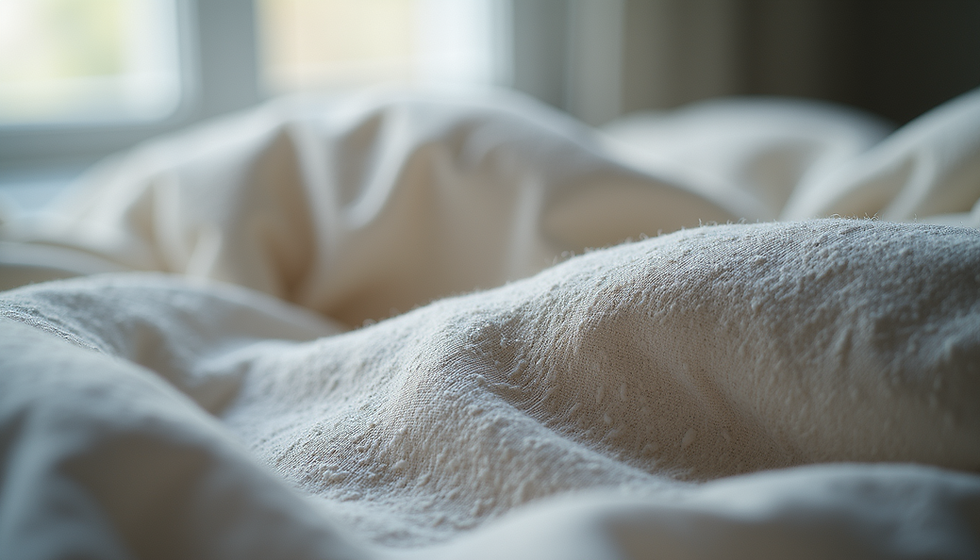Discover the Charm of Contemporary Fabric in Modern Textile Designs
- Tuna Textile

- Sep 16
- 4 min read
In the evolving world of textile design, the fusion of innovation and tradition has given rise to remarkable materials that redefine style and functionality. Modern textile design embraces new techniques and materials, creating fabrics that are not only visually appealing but also practical and sustainable. Among these innovations, contemporary fabric stands out as a versatile choice that blends aesthetics with performance, making it a favourite in both fashion and interior design.
The Role of Modern Textile Design in Today's Industry
Modern textile design is more than just creating beautiful fabrics. It involves a deep understanding of materials, technology, and consumer needs. Designers today focus on producing textiles that offer durability, comfort, and environmental responsibility. This approach has led to the development of fabrics that are lightweight yet strong, breathable yet water-resistant, and stylish yet easy to maintain.
For example, many modern textiles incorporate recycled fibres or use eco-friendly dyes to reduce environmental impact. This shift towards sustainability is not only a trend but a necessity in the textile industry. Additionally, smart textiles that respond to temperature or light are becoming increasingly popular, offering new possibilities for clothing and home furnishings.

Exploring the Innovations in Modern Textile Design
Innovation in textile design is driven by advances in technology and materials science. Techniques such as 3D knitting, digital printing, and laser cutting allow designers to create complex patterns and textures that were previously impossible. These methods also enable mass customisation, where consumers can personalise fabrics to suit their tastes and needs.
Moreover, the integration of nanotechnology has enhanced fabric properties, making them stain-resistant, anti-bacterial, or UV-protective. These features are particularly valuable in activewear and outdoor textiles, where performance is critical.
Textile manufacturers are also experimenting with bio-based fibres derived from plants and algae, which offer a renewable alternative to synthetic fibres. These innovations not only improve fabric quality but also contribute to a circular economy by reducing waste and pollution.

What are the three different types of fabric?
Understanding the basic types of fabric is essential for appreciating modern textile design. Fabrics generally fall into three categories based on their fibre content and construction:
Natural Fabrics: Made from fibres obtained from plants or animals, such as cotton, wool, silk, and linen. These fabrics are prized for their breathability, comfort, and biodegradability. For instance, cotton is widely used in everyday clothing due to its softness and moisture absorption.
Synthetic Fabrics: Created from chemical compounds, examples include polyester, nylon, and acrylic. These fabrics are known for their durability, elasticity, and resistance to wrinkles and shrinking. They are often blended with natural fibres to enhance performance.
Blended Fabrics: These combine natural and synthetic fibres to leverage the benefits of both. A common blend is cotton-polyester, which offers the comfort of cotton with the strength and wrinkle resistance of polyester.
Each type has unique characteristics that influence its use in fashion, upholstery, and technical textiles. Modern textile design often involves blending these fabrics to create materials that meet specific functional and aesthetic requirements.

Practical Applications of Contemporary Fabric in Everyday Life
The charm of contemporary fabric lies in its adaptability. It is used extensively in various sectors, from fashion to home décor and industrial applications. In fashion, designers use contemporary fabrics to create garments that are stylish, comfortable, and easy to care for. For example, moisture-wicking fabrics are popular in sportswear, while wrinkle-resistant blends are favoured for business attire.
In interior design, contemporary fabrics enhance the look and feel of furniture, curtains, and cushions. They offer durability and stain resistance, making them ideal for high-traffic areas. Additionally, many contemporary fabrics come in a wide range of colours and textures, allowing for creative expression in home styling.
Industrial uses include automotive upholstery, medical textiles, and protective clothing. These fabrics often require special properties such as flame retardancy, antimicrobial treatment, or high tensile strength, which modern textile technology can provide.
Tips for Choosing the Right Contemporary Fabric
Consider the purpose: Select fabrics based on where and how they will be used.
Check care instructions: Some fabrics require special washing or maintenance.
Look for sustainability: Opt for eco-friendly options when possible.
Test durability: For upholstery or workwear, durability is key.
Match aesthetics: Choose colours and textures that complement your style.
Future Trends in Modern Textile Design
The future of modern textile design is exciting, with ongoing research pushing the boundaries of what fabrics can do. Smart textiles that interact with the environment or the wearer are becoming more accessible. For example, fabrics that monitor health metrics or change colour based on temperature are no longer science fiction.
Sustainability will continue to be a major focus, with innovations aimed at reducing water usage, chemical waste, and carbon footprint. Circular design principles, where fabrics are designed for reuse and recycling, will become standard practice.
Moreover, digital technologies like AI and virtual reality are transforming how textiles are designed, produced, and marketed. These tools enable faster prototyping, better quality control, and personalised shopping experiences.
By embracing these trends, the textile industry will create fabrics that are not only beautiful and functional but also responsible and forward-thinking.
Exploring the charm of contemporary fabric reveals a world where creativity meets technology. Whether in fashion, interiors, or industry, modern textile design offers endless possibilities to enhance our daily lives with fabrics that are innovative, sustainable, and stylish. Embracing these materials allows us to enjoy the best of both tradition and modernity in textile craftsmanship.



Comments